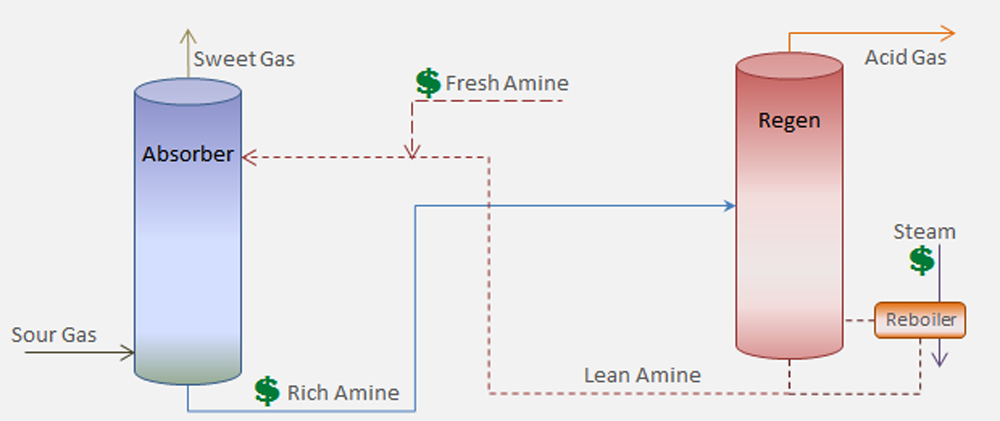Daily Amine Plant Lean Load Measurement Extends and Optimizes Performance
High lean loads in amine systems are often tied to high corrosion rates and sub-par plant performance. And since H2S is typically removed to levels of 4 ppm in sales gas versus 2% typically for CO2, plants that remove H2S are far more sensitive to lean load. As a result, in natural gas treating and amine plant operation, a most important tool for maintaining smooth operation and optimizing performance is a daily measurement of amine solution “lean load”. So what is lean load and how is it measured?
At the bottom of an amine absorber amine is “rich”, and its loading is determined by amine type, partial pressure of acid gas components (concentration X pressure) and temperature. In the regenerator, conditions of low pressure and high temperature combine to remove acid gas compounds, thereby making the amine lean.
One of the most important factors in determining how lean an amine solution becomes (its resulting “lean load”) is calculating the amount of steam produced in the reboiler per pound of acid gas being removed. (It is important to note that reboiler temperature ALONE cannot tell one the lean loading since it is only a measure of the solution boiling point at that pressure.) Lean load, then, is determined by titrating the amine solution.
Stated simply, measuring lean load in amine treatment is like determining just how empty your wheelbarrow is after you empty it. Trying to “carry” a significant amount of lean amine in your empty “wheelbarrow” results in excessive work and reduced capacity. Bottom line – lean load gives you a measure of the capacity of your amine solution to remove CO2 and H2S.
Good plant OPERATION involves measuring lean loading at least daily and sometimes hourly during problem times. A good record of lean loads during normal operation will give one a baseline to compare with during plant upset conditions.
Another extremely good use for calculating lean loads is optimization of plant PERFORMANCE whether the plant is operating at maximum capacity, or some lower capacity. When operating at lower capacity, the best procedure is to gradually lower circulation rate to a level appropriate for the gas flow and composition, then gradually lower firing rate while monitoring lean loads. When lean load starts to show a slight increase, you have achieved the minimum fuel consumption for that equipment in that service.
So monitoring amine plant lean load daily can be a crucial tactic in optimizing plant operations and performance, as well as extending the life and reliability of its hardware by reducing corrosion when lean loading is reduced. But the question may remain for some – why is this such a potentially important consideration for gas producers to make?
Squeezing more out of your existing system can prevent unnecessary major capital expenditures, as well as improve raw material flexibility. The significant benefits captured by increased sulfur handling capacity surely dwarfs the small benefits achieved through energy efficiency strides. The big money behind amine unit optimization comes from raw material flexibility, and this alone should motivate refiners to focus harder on their amine systems.
Agile Process Solutions, LLC, in collaboration with Morrow Renewables, LLC, offers natural gas producers and midstream operators process design, fabrication, construction and start-up for custom and stock oil and gas processing plants and equipment, with options for contract treating provided by Agile’s parent company, Morrow Energy. Specializing in natural gas and oil facilities including amine treatment plants up to 2000 GPM, the company also provides crude oil stabilizers, TEG (glycol) dehydration units, physical solvent treating and NGL recovery (dewpoint control) and fractionation. Agile’s ownership has over 100 years’ combined experience in plant design and natural gas plant manufacturing.

